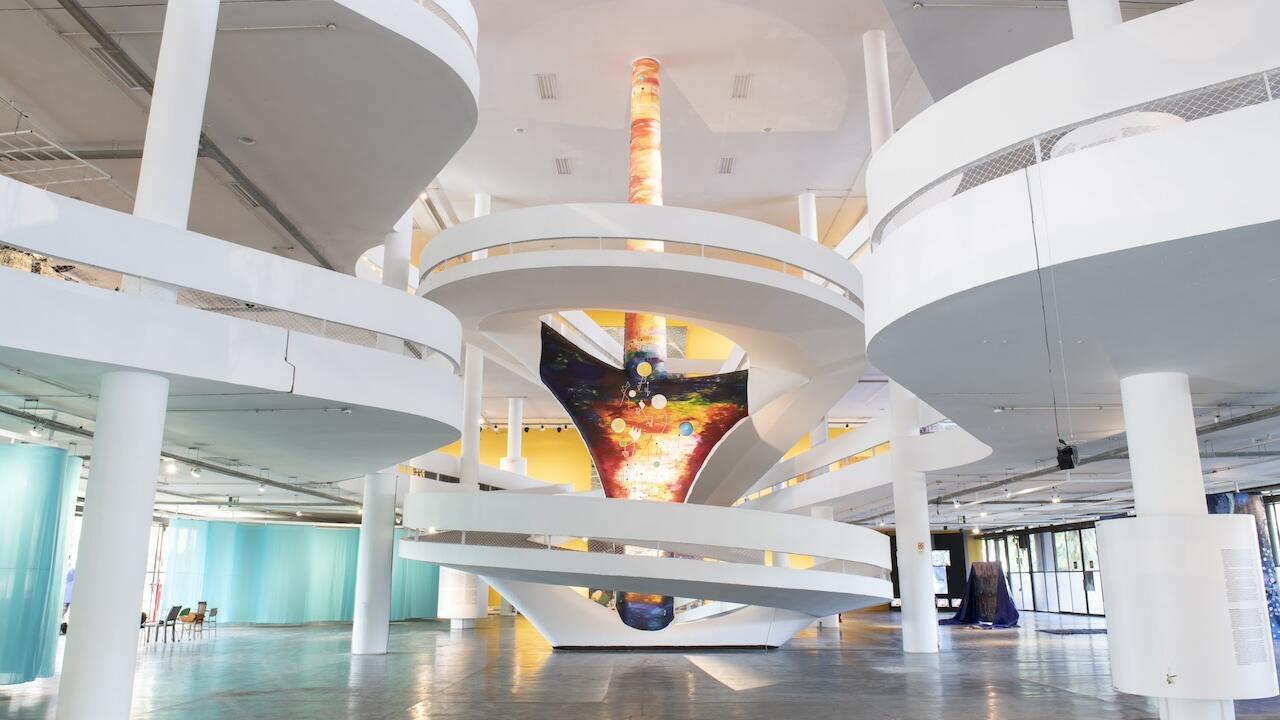28th São Paulo Biennial
Ibirapuera Park, São Paulo, Brazil
Ibirapuera Park, São Paulo, Brazil

In their introduction to the catalogue of the 28th Bienal de São Paulo, artistic director Ivo Mesquita and curator Ana Paula Cohen outline their positive intentions for the show as a constructive critique of the proliferating global biennial circuit and its increasing lack of relevance. They also hope to take a critical, self-reflexive look at the Bienal itself. Yet the exhibition, even before its opening, came under attack from sceptics.
São Paulo is Latin America’s biggest and the world’s second oldest biennial, and it is no stranger to controversy. The 2000 edition was postponed when a drastic budget cut resulted in a long struggle between the board and the curatorial team. Mesquita, the chief curators and a number of board members resigned. Mesquita was asked to come back as chief curator for 2008, but under severely handicapped conditions: not only was the budget slashed from $12 million to a mere $3.5 million, but there was less than a year to prepare. Mesquita took on the challenge and together with Cohen crafted a radical statement that involved leaving the second floor of the 30,000-square-metre Bienal pavilion entirely empty – a conceptual comment on itself and on biennials in general.
The exhibition did incorporate various traditional and innovative elements: art works, performances, films, videos, a website, a series of newspapers made available throughout the city and a number of seminars and conferences. The ‘Square’ section, created as a kind of public plaza on the ground floor with delineated spaces such as ‘Silent Area’ and ‘Dialogue Area’ stencilled somewhat wryly in various locations, featured a programme of daily performances. ‘Video Lounge’ showcased historic performances as well as recordings of lectures, performances and workshops that took place during the Bienal.
The ‘Services’ section on the first floor presented a mixture of visitor support (a thoughtfully stocked bookshop) and a number of artists’ projects, including a pile carpet made by Valeska Soares depicting the biomorphic logo of the first edition of the biennial in 1951 and a booth by Paul Ramirez Jonas where visitors could formally exchange a personal house key for one of 2,500 copies of the key to the Bienal’s front door. (The year 1951 is an important reference point for Mesquita and Cohen. The title of their 2008 presentation, ‘In Living Contact’, comes from the catalogue introduction to that first São Paulo Bienal, written by its first curator, Lourival Gomes Machado: ‘By its own definition, the Bienal should fulfil two major tasks: place Brazil’s modern art not merely in confrontation with, but also in living contact with, the art of the world, while simultaneously seeking a position for São Paulo as a world art centre.’)
The most controversial part of the exhibition was the aforementioned second floor. What had earlier been referred to as ‘the Void’ but which evolved into ‘Open Plan’, it left the vast core of the building entirely empty and offered visitors an immediate, unobstructed experience of the Oscar Niemeyer-designed building, and the opportunity to think anew about the purpose of the biennial, proposing, in a sense, a completely blank slate. The third floor was home to ‘Plan of Readings’. Its three sections – auditorium, library and exhibition – revolved around the Wanda Svevo Historical Archive, which preserves the history of the Bienal de São Paulo since its inauguration, plus a library of catalogues from more than 200 biennials (some long defunct) from around the globe.
Materials generated during the show’s conferences, talks and panel discussions were to be added to the archive as ‘In Living Contact’ progressed. The more than 40 Brazilian, Latin American and international artists in the show presented works related to memory, documentation and history. Work by younger artists tended to be more conducive to display in a library or archive than a traditional white-cube exhibition. Fernando Bryce’s Vision de la pintura occidental (Vision of Western Painting, 2002), for instance, is based on a museum of reproductions at a university in Lima whose aim is to make art accessible. Bryce offered something that is yet another layer removed – a salon-style composition of photographs of reproductions of distant originals.
Another intriguing work was Erick Beltrán’s The World Explained (2008), described by the artist as a Wunderkammer of non-specialized knowledge. It consisted of a large collection of maps, diagrams and written accounts of how our world functions, all from the point of view of non-experts. One describes where glue comes from; another discusses the colour of tomatoes; another tries to explain the nature of intuition. A working printing press on the first floor enabled visitors’ theories to be integrated into the growing encyclopaedia. The Biennal’s powerful exhibition design was by the artist Gabriel Sierra, conceived in collaboration with the curators and other participating artists. Sierra’s gallery architecture questions the dependency of art on physical spaces, yet the uniformity it imposed made the third floor look a little too homogeneous.
One of the works that successfully evaded this effect was Angela Ferreira’s For Mozambique (Model #3 for Propaganda Stand, Screen and Loudspeaker Platform Celebrating a Post-Independence Utopia) (2008). Part Constructivist podium, part film screen, the piece is a dual representation of independence, depicting both the era following the Russian Revolution in the 1920s and the euphoria surrounding Mozambique’s independence in the mid-1970s. The 28th Bienal de São Paulo was as much about the politics and problems of the art world as about actual art works. Whatever one’s judgement of the exhibition concept, however, ‘In Living Contact’ was an inspired response to its own difficult circumstances, and one must applaud the curators, who have successfully navigated a bewildering minefield of bureaucratic politics, budget cuts and power struggles to bring to their audience a sophisticated artistic and curatorial discourse.






















